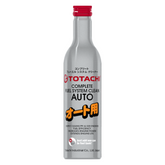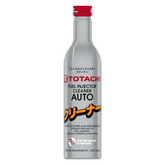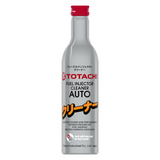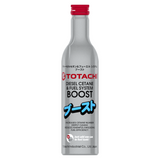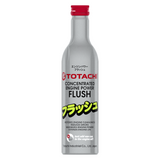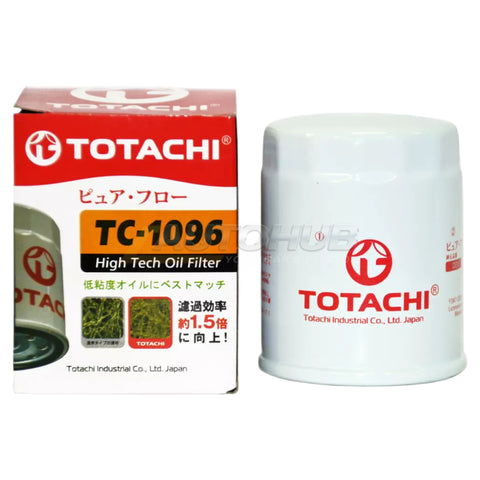
Totachi Oil Filter HONDA (TC-1096)
In order to further develop Totachi Automotive Filters, the product development team recently sent filter samples to the Central Automobile and Engine Institute (NAMI), to implement comparative filter testing in an independent research facility.
The technological development of Totachi Automotive Filters is reliant on working with various scientific bodies around the world who lead their field in research and development, such as the NAMI Institute of the Russian Federation. Outlined below is an overview of the findings from the NAMI study on Totachi Automotive Filters.
The level of contamination in a used engine oil has several key contributors: quality of fuel, quality of oil, engine design, and engine application. There are also many factors that contribute to contamination of engine oil, such as oxidation, incomplete combustion, foreign particles, engine residuals. Contaminants can be categorized into two major groups: organic, and inorganic.
The majority of organic contaminants consist of byproducts of incomplete combustion, thermal decomposition, oxidation, as well as polymerization of oil, fuel, water and sulfur compounds. Modern engine lubricants contain detergent and dispersant additives that aim to prevent contaminants adhering to each other, resulting in particles no larger than two microns. Organic contaminants have no significant effect on the friction couples or abrasive wear of the engine.
Inorganic contaminants include dust particles, worn out ash additive particles, engine wear particles and process contaminants. These contaminants lead to abrasive wear, and can have significantly detrimental effects of the longevity of the engine.
Automotive filters are assigned the role of removing contaminants (both organic and inorganic) from the engine oil.

Test no. 1: Comparative test of a spin-on oil filter
– Toyota OEM filter, and the cross-referenced alternative for MANN-HUMMEL and TOTACHI:
- TC-1030 (TOTACHI Industrial Co Ltd, Japan);
- W68/3 (MANN-HUMMEL GmbH, Germany);
- 90915-YZZJ1 (original Toyota Motor Corp).
The results of the comparative testing demonstrate that the TOTACHI TC-1030 filter sample has a filtration capacity of 28 microns, a value of 62% in regards to completeness of filtration, with 0.018 MPa maintenance of hydraulic resistance – these results are similar to that of the Toyota and MANN-HUMMEL filters. Given the test data, the NAMI Institute has given testimonial that the service life of the TC-1030 exceeds 15 000km, exceeding the requirements for replacement intervals of leading OEMs (including Toyota).

Test no. 2: The following analog samples of ECO series filters were compared:
- TO-1190 (TOTACHI Industrial Co Ltd, Japan);
- HU 6006z (MANN-HUMMEL GmbH, Germany);
- 04152-37010 (original Toyota Motor Corp).
The results of the comparative testing demonstrate that the TOTACHI TO-1190 filter sample has a filtration capacity of 30 microns, a value of 59% in regards to completeness of filtration, with 0.012 MPa maintenance of hydraulic resistance – these results are similar to that of the Toyota and MANN-HUMMEL filters. However, the results of the dust capacity testing indicate that the TO-1190 has a similar relative density and filter screen surface area of the OEM sample, resulting in a apples-for-apples service life, which exceeds the parameters of the second competitor’s sample by 65%.
We Also Recommend
Related Products
Totachi Oil Filter HONDA (TC-1096)
Pay Cash On Delivery *
* Only for Pakistan
Note: Any order above 20 thousand require upfront money using Bank transfer or Jazz Cash
In order to further develop Totachi Automotive Filters, the product development team recently sent filter samples to the Central Automobile and Engine Institute (NAMI), to implement comparative filter testing in an independent research facility.
The technological development of Totachi Automotive Filters is reliant on working with various scientific bodies around the world who lead their field in research and development, such as the NAMI Institute of the Russian Federation. Outlined below is an overview of the findings from the NAMI study on Totachi Automotive Filters.
The level of contamination in a used engine oil has several key contributors: quality of fuel, quality of oil, engine design, and engine application. There are also many factors that contribute to contamination of engine oil, such as oxidation, incomplete combustion, foreign particles, engine residuals. Contaminants can be categorized into two major groups: organic, and inorganic.
The majority of organic contaminants consist of byproducts of incomplete combustion, thermal decomposition, oxidation, as well as polymerization of oil, fuel, water and sulfur compounds. Modern engine lubricants contain detergent and dispersant additives that aim to prevent contaminants adhering to each other, resulting in particles no larger than two microns. Organic contaminants have no significant effect on the friction couples or abrasive wear of the engine.
Inorganic contaminants include dust particles, worn out ash additive particles, engine wear particles and process contaminants. These contaminants lead to abrasive wear, and can have significantly detrimental effects of the longevity of the engine.
Automotive filters are assigned the role of removing contaminants (both organic and inorganic) from the engine oil.

Test no. 1: Comparative test of a spin-on oil filter
– Toyota OEM filter, and the cross-referenced alternative for MANN-HUMMEL and TOTACHI:
- TC-1030 (TOTACHI Industrial Co Ltd, Japan);
- W68/3 (MANN-HUMMEL GmbH, Germany);
- 90915-YZZJ1 (original Toyota Motor Corp).
The results of the comparative testing demonstrate that the TOTACHI TC-1030 filter sample has a filtration capacity of 28 microns, a value of 62% in regards to completeness of filtration, with 0.018 MPa maintenance of hydraulic resistance – these results are similar to that of the Toyota and MANN-HUMMEL filters. Given the test data, the NAMI Institute has given testimonial that the service life of the TC-1030 exceeds 15 000km, exceeding the requirements for replacement intervals of leading OEMs (including Toyota).

Test no. 2: The following analog samples of ECO series filters were compared:
- TO-1190 (TOTACHI Industrial Co Ltd, Japan);
- HU 6006z (MANN-HUMMEL GmbH, Germany);
- 04152-37010 (original Toyota Motor Corp).
The results of the comparative testing demonstrate that the TOTACHI TO-1190 filter sample has a filtration capacity of 30 microns, a value of 59% in regards to completeness of filtration, with 0.012 MPa maintenance of hydraulic resistance – these results are similar to that of the Toyota and MANN-HUMMEL filters. However, the results of the dust capacity testing indicate that the TO-1190 has a similar relative density and filter screen surface area of the OEM sample, resulting in a apples-for-apples service life, which exceeds the parameters of the second competitor’s sample by 65%.

